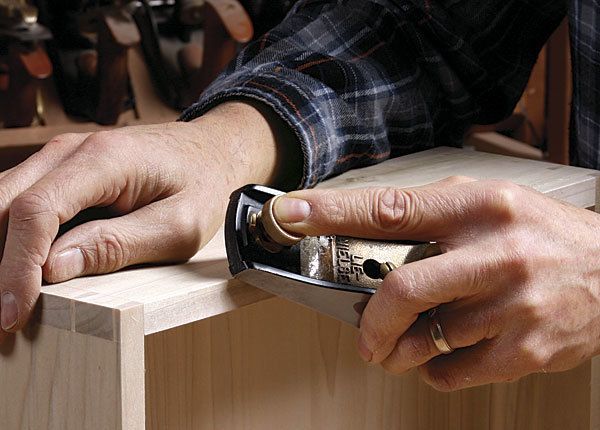Do More with Your Block Plane
Pound for pound, no hand tool in the shop packs in more value than the block plane.

Synopsis: Pound for pound, no hand tool in the shop packs in more value than the block plane. Its compact size makes it great for trimming parts flush, breaking edges, and shaping and smoothing both curved and straight pieces. Learn how to use your block plane and take your furniture making to the next level.
The block plane is a great acquisition for a woodworker of any skill level. Pound for pound (or ounce for ounce), it packs in more value than almost any other hand tool. The key is its compact size. A block plane fits in one hand, making it easy to control. It can be used with a delicate touch, and with your grip being so close to the wood’s surface, it’s easy to develop a good feel for the tool.
I’ll show you how to use a block plane to take your woodworking to another level. But first, a few words about the tool itself.
Go low angle, and keep it sharp
There are two types of block planes, standard models with the blade, or iron, held at 20°, and low-angle models with the blade bedded at 12°, designed for end-grain work. Both types have the blade bedded with the bevel facing up. I would recommend a low-angle model as a first block plane. Get the blade razor sharp (I hone the bevel of the low-angle plane at roughly 30°), set up the plane to take fine cuts, and you’ll get great results on end grain and long grain alike. (For more on standard vs. low-angle block planes, and for recommendations on which ones to buy, see Mario Rodriguez’s review in FWW #228.)
How to push (or pull) a block plane
The block plane is designed to be held easily in one hand, but I recommend using both when possible, to increase your control over the tool. There are a number of ways that I add my second hand (see photos, this page and opposite); I even reverse hands and pull the tool through the cut when needed. It works just as well.
Heavy planing is best done with the force coming from your lower body—all the way down to your feet—leaving your hands and lower arms for control. But for lighter cuts or awkward situations, you’ll find that pushing with your arms is just fine.
Photos: Asa Christiana
For the full article, download the PDF below:
Fine Woodworking Recommended Products

Tite-Mark Marking Gauge

Starrett 4" Double Square

Stanley Powerlock 16-ft. tape measure








Log in or create an account to post a comment.
Sign up Log in